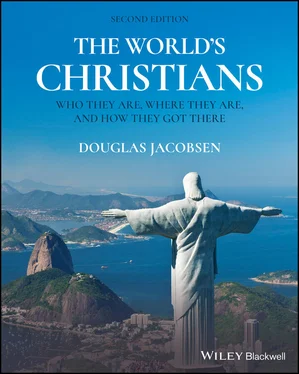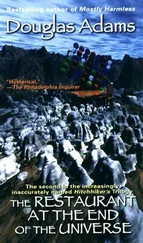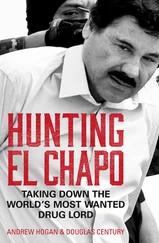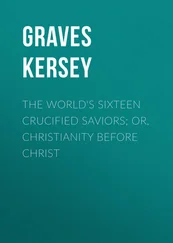Voices of World Christianity 2.1 John Henry Newman on the Pursuit of Truth
 John Henry Newman(1801–90) was an Anglican priest who converted to Roman Catholicism in 1845. After many years of service to the Catholic Church, and especially to Catholic higher education, he was given the honorific title of cardinal in 1879. In 2019, Newman was declared a Catholic saint. While many religious converts demonize their past, telling stories about moving from falsehood and confusion to new and absolute truth, Newman was different. For him, life was an unpredictable journey. He believed that human beings typically move toward truth slowly, haltingly, and indirectly. When Newman was asked to help establish a new Catholic University in Ireland, this concept of slowly unfolding truth was central to his vision of Catholic higher education.
John Henry Newman(1801–90) was an Anglican priest who converted to Roman Catholicism in 1845. After many years of service to the Catholic Church, and especially to Catholic higher education, he was given the honorific title of cardinal in 1879. In 2019, Newman was declared a Catholic saint. While many religious converts demonize their past, telling stories about moving from falsehood and confusion to new and absolute truth, Newman was different. For him, life was an unpredictable journey. He believed that human beings typically move toward truth slowly, haltingly, and indirectly. When Newman was asked to help establish a new Catholic University in Ireland, this concept of slowly unfolding truth was central to his vision of Catholic higher education.
Excerpt from The Idea of a University (1852):
I still say that a scientific speculator or inquirer is not bound, in conducting research, to every moment be adjusting [that research] by the maxims of … popular traditions … being confident, from the impulse of generous faith, that, however [one’s] line of investigation may swerve now and then, and vary to and fro in its course, or threaten momentary collision or embarrassment with any other department of knowledge, theological or not, yet, if [we] let it alone, it will be sure to come home, because truth never can really be contrary to truth … There are no short cuts to knowledge, nor does the road to it always lie in the direction in which it terminates, nor are we able to see the end on starting. It may often seem to be diverging from a goal into which it will soon run without effort, if we are but patient … Moreover, it is not often the fortune of anyone to live through an investigation; the process is one of not only many stages, but of many minds. What one begins another finishes … This being the case, we are obliged … to bear for a while with what we feel to be error, in consideration of the truth in which it is eventually to issue .
John Henry Newman, The Idea of a University (New Haven, CT: Yale University Press, 1996), pp. 229–30.
Salvation in the Catholic tradition is set within a grand narrative of God’s eternal love for the world. God made the world out of nothing, out of an overflowing abundance of divine love (see Voices of World Christianity 2.2). And God created people as beings who have the capacity to experience that love and reflect it back to God. Catholics believe that this original relationship of love between God and humanity has been disrupted by humanity’s sin, but despite that disruption God’s love for humankind continues. God is constantly trying to woo people back into the loving relationship for which they were created. This explains why Christ said that the greatest of all the commandments is to love God with all one’s heart, mind, soul, and strength. The love of God is “commanded” not because it is a duty that humanity owes to God, but because people can only truly and fully be themselves when they exist in a mutually loving relationship with God.
For individuals, the day‐to‐day experience of salvation has a somewhat different focus: the forgiveness and elimination of sin. Sin is an attitude or action that transgresses God’s law or that directs humans away from the life‐affirming goals and purposes for which they were created. Sin often takes the form of wrongful attachments to crass desires, the dogged pursuit of material comforts which makes people less than they were meant to be and which undermines the bonds of human care, affection, and solidarity. The Catholic tradition makes a distinction between original sin and subsequent sins. Original sin, which humanity inherited from the first human beings (Adam and Eve) who also committed the first sin, consists of a lack of trust in and love for God. The various specific sins which people commit, ranging in gravity from mortal sins such as murder and adultery to venial sins such as telling a “white lie” or being intentionally rude or disrespectful to a neighbor, all flow from this underlying defect in human nature.
Voices of World Christianity 2.2 Julian of Norwich on God’s Love for Humankind
 Julian of Norwich(1342–1416) was an anchorite who lived her entire adult life seeking the presence of God in a small doorless room (an “anchorhold”) built onto the side wall of St. Julian’s Church in Norwich, England. Very little is known about her. Even her name is a mystery, since Julian is likely a reference to the church where she lived and not her given name. Despite this anonymity, Julian is historically important. She was the first woman to write a book in the English language, and the subject of that book is God’s love. This excerpt, taken from her Showings (which is also known by the title Revelations of Divine Love ), describes God’s affection for humankind using both masculine and feminine imagery.
Julian of Norwich(1342–1416) was an anchorite who lived her entire adult life seeking the presence of God in a small doorless room (an “anchorhold”) built onto the side wall of St. Julian’s Church in Norwich, England. Very little is known about her. Even her name is a mystery, since Julian is likely a reference to the church where she lived and not her given name. Despite this anonymity, Julian is historically important. She was the first woman to write a book in the English language, and the subject of that book is God’s love. This excerpt, taken from her Showings (which is also known by the title Revelations of Divine Love ), describes God’s affection for humankind using both masculine and feminine imagery.
Excerpt from Showings (1413):
[God] showed me something small, no bigger than a hazelnut, lying on the palm of my hand and I perceived that it was as round as any ball. I looked at it and thought: What can this be? And I was given the general answer: It is everything which is made. I was amazed that it could last, for I thought that it was so little that it could suddenly fall into nothing. And I was answered in my understanding: It lasts and always will, because God loves it, and thus everything has being through the love of God …
And so in our making, God almighty is our loving Father, and God all wisdom is our loving Mother, with the love and goodness of the Holy Spirit, which is all one God, one Lord. And in the joining and the union he is our very true spouse and we his beloved wife and his fair maiden, with which he will never be displeased, for he says: I love you and you love me, and our love will never divide in two .
I contemplated the work of all the blessed Trinity, in which contemplation I saw and understood these three properties: the property of the fatherhood, and the property of the motherhood, and the property of the lordship in one God …
The mother can give her child to suck of her milk, but our precious Mother Jesus can feed us with himself, and does, most courteously and most tenderly, with the blessed sacrament, which is the precious food of true life; and with all the sweet sacraments he sustains us most mercifully and graciously .
Julian of Norwich: Showings , trans. Edmund College and James Walsh (New York: Paulist Press, 1978), pp. 130, 293, 298.
As in Orthodoxy, salvation within the Catholic tradition is understood to be a process rather than an event. That process begins with the sacrament of baptism which undoes the damage of original sin and which makes it possible once again to trust and love God. Overcoming various specific sins takes place through the sacrament of penance and reconciliation. This sacrament provides both a remedy for the sins people commit and a mechanism for moral advancement in the Christian life. Individuals first acknowledge the wrong they have done, then express sorrow (contrition) for their sins, and finally seek to “make satisfaction,” righting the wrong that has resulted from their actions. The church, through a priest, assures penitent individuals that their sins have been forgiven through the sacrifice of Christ’s death.
Читать дальше

 John Henry Newman(1801–90) was an Anglican priest who converted to Roman Catholicism in 1845. After many years of service to the Catholic Church, and especially to Catholic higher education, he was given the honorific title of cardinal in 1879. In 2019, Newman was declared a Catholic saint. While many religious converts demonize their past, telling stories about moving from falsehood and confusion to new and absolute truth, Newman was different. For him, life was an unpredictable journey. He believed that human beings typically move toward truth slowly, haltingly, and indirectly. When Newman was asked to help establish a new Catholic University in Ireland, this concept of slowly unfolding truth was central to his vision of Catholic higher education.
John Henry Newman(1801–90) was an Anglican priest who converted to Roman Catholicism in 1845. After many years of service to the Catholic Church, and especially to Catholic higher education, he was given the honorific title of cardinal in 1879. In 2019, Newman was declared a Catholic saint. While many religious converts demonize their past, telling stories about moving from falsehood and confusion to new and absolute truth, Newman was different. For him, life was an unpredictable journey. He believed that human beings typically move toward truth slowly, haltingly, and indirectly. When Newman was asked to help establish a new Catholic University in Ireland, this concept of slowly unfolding truth was central to his vision of Catholic higher education.










